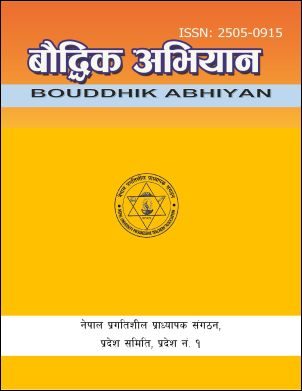The Mundhum Myth: A Semiological Perspective
DOI:
https://doi.org/10.3126/bdkan.v7i1.47567Keywords:
acoustic image, sign, signifier, signified, tridimensional patternAbstract
This article aims to observe the Limbu Mundhum myth Yapmi Pongma Mundhum 'The Creation of Man' from the semiological perspective setting it in the second order tridimensional pattern developed by French semiotician, Roland Barthes. The objective of the study is to find out the process of interpreting myth through Barthean model of semiotic system. Basically, the analysis is based on linguistic theory of literary criticism. The theory proposed by Barthes is modeled upon Ferdinand de Saussure's linguistic 'sign' under the semiological system. In the process of analysis, the study has revealed that though Barthes' semiotic pattern follows Saussure's model of sign system, there are certain distinct features in the interpretation of myth than that of Saussuren linguistic sign, signifier and signified pattern. Especially, the component 'signifier' is differently perceived in Barthes' triple dimensional pattern. Likewise, the connection between 'signifier' and 'signified' is not the same in simple linguistic and mythical semiotic system. The article can be useful to create a way for interested individuals to deepen their understanding of language, literature and society.




